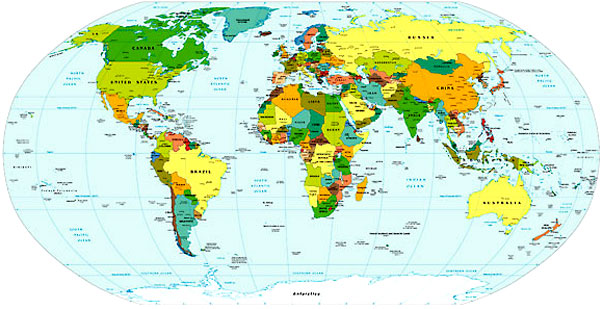 Remember the Faroe Islands? That little cluster high above Scotland, halfway to Iceland? Today is Olavsoka in the Faroes—St Olaf’s Day. Olav is the patron saint of the Faroes, and this is one of the parts of the world where that is a big deal. Saint days for specific places allow the same kind of celebration of national culture that Independence and National days do elsewhere. Whenever I look at pictures of the Faroe Islands I want to go—they don’t look like a place to go partying, but a pretty, quiet place. The perfect location for a writing cabin? Maybe. Oh, and Tinganes, the seat of the islands’ government, is a beautiful colour red, located right on the water. Lovely.
Remember the Faroe Islands? That little cluster high above Scotland, halfway to Iceland? Today is Olavsoka in the Faroes—St Olaf’s Day. Olav is the patron saint of the Faroes, and this is one of the parts of the world where that is a big deal. Saint days for specific places allow the same kind of celebration of national culture that Independence and National days do elsewhere. Whenever I look at pictures of the Faroe Islands I want to go—they don’t look like a place to go partying, but a pretty, quiet place. The perfect location for a writing cabin? Maybe. Oh, and Tinganes, the seat of the islands’ government, is a beautiful colour red, located right on the water. Lovely.The Faroes are officially an autonomous province of Denmark—apparently this makes them a member of the Rigsfællesskab, which I have just learned is just the Danish term for the relationship between Denmark and its self-governed insular regions—Greenland, then, is also a “member.”
The history that we do have of the islands starts, of course, with some Irish monks. (All good history should…) Some hermits took themselves to the island, bringing sheep and oats with them (and then, I hope, ignoring each other in proper hermit-style) as well as the (early) Irish language. Also, Saint Brendan (you don’t remember when he lived? 484-578. Now study up on your hagiography, dear readers) is said to have visited the islands more than once. (More recently, Bill Clinton visited too. He clearly didn’t want to be outdone by Saint Brendan, who didn’t even have the advantage of Atlantic Airways.)
In the 7th century, Vikings set up shop, replacing the monks and other settlers, and replacing the Irish language with Old Norse—modern Faroese comes from this language. (My Old English teacher, to invoke him again, says that the Faroese language is still recognisable if you know Old Norse: in the more isolated regions, the language changes less, as it has less outside influence. There are a few islands off the coast of Maryland and Virginia in the US where it is said the inhabitants speak something similar to the Elizabethan English of the early settlers in the US—again, isolation. Why don’t you test it out? Study up on Old Norse, go to the Faroe Islands and pick up the local newspaper. Tell me what you can understand.)
 Norwegians had control of the islands until Norway entered the Kalmar Union with Denmark, and when the union between Norway and Denmark ended in 1814, Denmark got custody, so to speak, of the islands. Oh—and until the 18th century, the population never exceeded 5000. These days its close to 50,000.
Norwegians had control of the islands until Norway entered the Kalmar Union with Denmark, and when the union between Norway and Denmark ended in 1814, Denmark got custody, so to speak, of the islands. Oh—and until the 18th century, the population never exceeded 5000. These days its close to 50,000.As nationalist movements were happening around Europe in the late 19th century, so too did nationalism hit the Faroes: the first step was built around keeping the Faroese language alive. The next step was political, with the foundation of local political parties early in the 20th century. Now the islands are autonomous, and take care of most things themselves—Denmark is in charge of defence, the legal system and foreign affairs. Interestingly, under stipulations in European Union treaties, inhabitants of the Faroes aren’t considered Danish nationals, and so they’re also not citizens of the European Union. Having now found out that all those living in the various French collectivities and departments are the world are in the European Union, I guess I find that a little surprising.
Still wondering about Saint Olaf? He was king of Norway from 1015-1038 (he was known as Olaf the Stout). He declared himself king, wiped out the kings to the south, married the Swedish Princess Ingegerd Olofsdotter without her father’s approval, and when Ingegerd died he married her half-sister, the illegitimate Astrid Olavsdttr, also the daughter of king Olof Skötkonung of Sweden. So where’s the saintliness?
Well, he Christianised Norway, and made efforts to establish greater church organization. Isn’t that enough? He was only officially canonised in 1888, but had been considered a saint long before that. Though he’s also the patron saint of Norway, the Faroe Islands are the only country/territory that keep St Olaf’s day as a holiday.
Looking around from a poem from the Faroe Islands I found this small piece by Christian Matras—translated from the Faroese by George Johnston. It originally comes from here.
Far Off the Sea
Softly falls the night
and children are in the field below the fences.
They run for the haybarn door
where shrunk boards leak
sweetness into the dusk.
Far off the sea whets his roar
in the hushed night between the hills.
—Christian Matras
translated from the Faroese by George Johnston


No comments:
Post a Comment